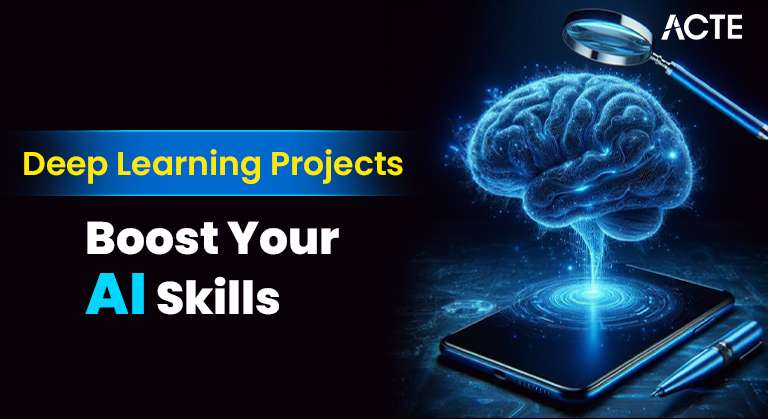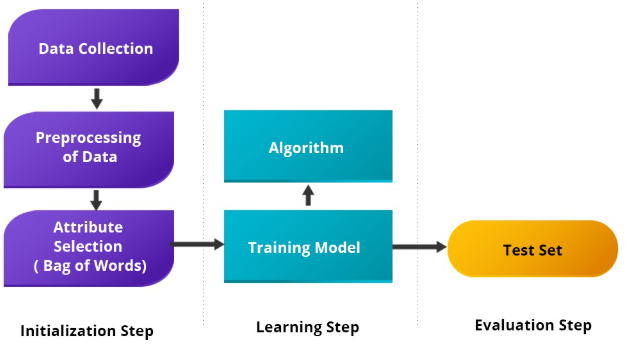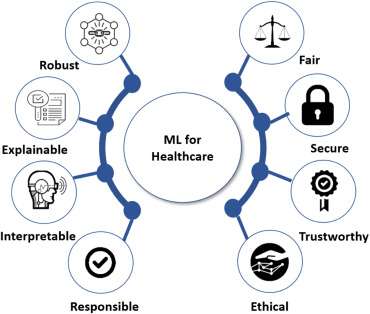
- Introduction to Deep Learning Projects
- Image Classification Using CNNs
- Sentiment Analysis with NLP and Deep Learning
- Object Detection with YOLO Algorithm
- Generative Adversarial Networks (GANs) for Image Synthesis
- Speech Recognition Using Deep Learning
- AI-Powered Chatbots Using Deep Learning
- Recommender Systems with Deep Learning
- Predictive Analytics in Healthcare Using Deep Learning
- Deep Learning for Self-Driving Cars
- Cloud Deployment of Deep Learning Models
- Future Trends in Deep Learning Projects
- Conclusion
Introduction to Deep Learning Projects
Deep learning is a subset of machine learning that involves using neural networks with many layers (hence “deep”) to model complex patterns in data. With the exponential growth in computational power and the availability of large datasets, deep learning has revolutionized various fields, from computer vision to natural language processing and healthcare. The potential of deep learning is vast, and it has led to the development of numerous innovative projects that solve real-world problems. This article will explore several exciting deep-learning projects across domains, including image classification, sentiment analysis, object detection, speech recognition, and more. Whether you’re a beginner or advancing your skills through Data Science Training, understanding these applications can offer valuable insights. We will also touch on the future of deep learning and how these technologies are shaping industries.
Image Classification Using CNNs
- Image Classification: A popular application of deep learning in computer vision, where Convolutional Neural Networks (CNNs) excel at tasks like image classification, object detection, and segmentation.
- Convolutional Neural Networks (CNNs): Specialized deep learning models designed to automatically learn spatial hierarchies of features through multiple layers, making them ideal for processing image data.
- Project Example Classifying Cats vs. Dogs: A simple project to classify images of cats and dogs using a CNN. The model learns to differentiate features like ear shape, tail, and body structure from a labeled dataset, with accuracy improvements achieved through data augmentation, regularization, and hyperparameter tuning.
- Tools & Libraries: Popular frameworks for image classification like TensorFlow, Keras, and PyTorch are key tools for anyone looking to Learn Data Science through practical projects.
To Explore Data Science in Depth, Check Out Our Comprehensive Data Science Course Training To Gain Insights From Our Experts!
Sentiment Analysis with NLP and Deep Learning
Sentiment analysis is a natural language processing (NLP) task that involves determining the sentiment or emotional tone behind a text. Deep learning techniques like Recurrent Neural Networks (RNNs), Long Short-Term Memory (LSTM) networks, and transformers (e.g., BERT) have proven to be highly effective for sentiment analysis tasks due to their ability to capture complex patterns in textual data. A typical project is to analyze the sentiment of movie reviews. By training an LSTM or BERT-based model on a dataset of labeled reviews (positive or negative), the model learns to predict the sentiment of unseen reviews. The goal is to classify reviews as “positive,” “negative,” or “neutral” based on their language and context. Tools & Libraries: NLTK, Hugging Face, TensorFlow, PyTorch

Object Detection with YOLO Algorithm
- Object Detection: Involves classifying objects within an image and locating them using bounding boxes. The YOLO (You Only Look Once) algorithm is a popular choice due to its speed and accuracy. YOLO divides an image into a grid, predicting bounding boxes and class probabilities for each grid cell, making it ideal for tasks requiring both speed and precision.
- Project Example Real Time Traffic Surveillance: Use YOLO for real-time traffic surveillance to detect vehicles and pedestrians in live video streams. The model can track objects such as cars, buses, bicycles, and pedestrians, making it suitable for smart city projects, autonomous driving, and security surveillance.
- Tools & Libraries: Popular tools for object detection like OpenCV, Darknet, TensorFlow, Keras, and PyTorch also support tasks related to Hypothesis Testing in Data Science.
Generative Adversarial Networks (GANs) for Image Synthesis
Generative Adversarial Networks (GANs) are a class of deep learning models consisting of two neural networks, a generator and a discriminator, trained in opposition to each other. The generator creates fake data, while the discriminator attempts to differentiate between real and fake data. GANs are mainly known for generating realistic images and have been applied to various fields such as art, gaming, and fashion. One of the most fascinating applications of GANs is transforming a basic sketch or rough image into a photorealistic image. This can be used in design, fashion, or even to help artists generate new concepts. The model learns how to map rough images to realistic counterparts by training on large datasets of image pairs (e.g., sketches and photos). Tools & Libraries: TensorFlow, Keras, PyTorch, FastAI
Interested in Obtaining Your Data Science Certificate? View The Data Science Course Training Offered By ACTE Right Now!
Speech Recognition Using Deep Learning
- Speech Recognition: Involves converting spoken language into text. Recurrent Neural Networks (RNNs) and transformers have significantly enhanced the accuracy of speech recognition systems. These models are trained on large datasets of audio and text to capture patterns in human speech.
- Project Example Voice Assistant Application: Create a voice-activated assistant using deep learning. By training a model on audio features like spectrograms and Mel-frequency cepstral coefficients (MFCCs), you can build a system that recognizes commands such as “Play music” or “Set alarm.” The system uses speech recognition to convert audio into text, then applies natural language processing to generate appropriate responses.
- Tools & Libraries: Popular tools for speech recognition, often covered in Data Science Training, include TensorFlow, PyTorch, Kaldi, and DeepSpeech.
AI-Powered Chatbots Using Deep Learning
AI-powered chatbots use deep learning techniques, particularly NLP models, to interact with users naturally and conversationally. These chatbots can handle various tasks like customer support, booking services, and general inquiries. They leverage architectures like sequence-to-sequence (Seq2Seq), transformer, and retrieval-based models. Create a deep-learning chatbot to respond to customer service inquiries, handle FAQs, and provide personalized support. This chatbot can be trained on a large dataset of customer service conversations to learn common customer queries and appropriate responses. More advanced systems like GPT-3 can be used to generate more dynamic and contextually appropriate responses. Tools & Libraries: Hugging Face, Rasa, TensorFlow, PyTorch.
Gain Your Master’s Certification in Data Science by Enrolling in Our Data Science Masters Course.
Recommender Systems with Deep Learning
- Recommender Systems: These systems suggest products, services, or content to users based on their preferences and past behaviors. Deep learning-based recommender systems, such as collaborative filtering and content-based filtering using neural networks, offer improved accuracy and personalization compared to traditional methods.
- Project Example Movie Recommendation System: Build a recommender system that suggests movies to users based on their watching history and ratings. Using techniques like collaborative filtering and neural collaborative filtering, the model can predict user preferences and recommend movies the user is likely to enjoy.
- Tools & Libraries: Common tools for building recommender systems include TensorFlow, Keras, PyTorch, and Surprise.
Predictive Analytics in Healthcare Using Deep Learning
Deep learning plays a vital role in healthcare, especially in predictive analytics. By analyzing medical images, records, and genetic data, these models can predict diseases and recommend treatments. When combined with Natural Language Processing, they also help extract insights from clinical notes to improve patient care. By training deep learning models on historical healthcare data, these systems can help in early diagnosis, personalized treatment plans, and disease prevention. One popular healthcare project is predicting the likelihood of diseases like diabetes, cancer, or heart disease using patient data. A deep learning model can be trained on a large dataset of health records to predict patient outcomes based on various features such as age, gender, lifestyle, and medical history. Tools & Libraries: TensorFlow, Keras, PyTorch, sci-kit-learn.

Deep Learning for Self-Driving Cars
- Self-Driving Cars: These vehicles use deep learning for perception, control, and decision-making. Models process input from cameras, LiDAR, and other sensors to recognize objects, plan routes, and navigate roads autonomously. Convolutional Neural Networks (CNNs) and Reinforcement Learning (RL) are key technologies in this domain.
- Project Example Lane Detection and Navigation: Develop a deep learning model for lane detection, a common task in autonomous driving. This project involves analyzing video from a vehicle-mounted camera using CNNs to identify and track lane markings, enabling the vehicle to navigate safely and accurately.
- Tools & Libraries: Useful tools include TensorFlow, OpenCV, PyTorch, and techniques like Data Reduction in Data Mining.
Cloud Deployment of Deep Learning Models
Deploying deep learning models to production requires handling large amounts of data, scaling the system, and ensuring low-latency responses. Cloud platforms like AWS, Google Cloud, and Microsoft Azure offer services that make it easier to deploy and manage deep learning models at scale. These platforms provide powerful tools for model deployment, monitoring, and updating. A cloud deployment project can focus on deploying a trained deep learning model (e.g., for image classification) to a cloud platform like AWS Sagemaker or Google Cloud AI. This allows the model to be accessed via an API, enabling real-time image classification from a web or mobile app. Tools & Libraries: AWS Sagemaker, Google Cloud AI, Docker, Kubernetes.
Preparing for a Data Science Job Interview? Check Out Our Blog on Data Science Interview Questions & Answer
Future Trends in Deep Learning Projects
The future of deep learning projects looks promising, with advancements in various areas:
- Transfer Learning: The ability to leverage pre-trained models on new tasks is becoming more efficient, making it easier to develop deep learning solutions with less data and computation.
- Explainable AI (XAI): As deep learning models become more complex, ensuring their transparency and interpretability will be crucial for fields like healthcare and finance.
- Multimodal AI: Combining data from text, images, and audio will create more advanced AI systems, with Parsing in NLP improving text understanding.
- Edge AI: Running deep learning models on edge devices (e.g., smartphones, IoT devices) will enable real-time decision-making and reduce reliance on cloud infrastructure.
- Ethical AI: As deep learning systems become more pervasive, ensuring they are fair, unbiased, and ethically sound will become increasingly important.
Conclusion
Deep learning projects are revolutionizing various industries by enabling machines to tackle complex problems with unprecedented accuracy. As technology evolves, the range of applications for deep learning continues to expand, touching everything from image classification and natural language processing to predictive analytics in healthcare, autonomous vehicles, and financial forecasting. Deep learning is enhancing healthcare by improving diagnoses, predicting outcomes, and personalizing treatments. With the rise of Data Science Training, more professionals are equipped to drive these innovations. As research progresses, its impact across industries continues to grow. In the automotive industry, for example, deep learning is critical in developing self-driving cars, enabling vehicles to understand their surroundings and make real-time decisions. Similarly, AI-driven automation streamlines manufacturing processes, optimizes supply chains, and enhances customer experiences. Looking to the future, the possibilities for AI, automation, and intelligent systems seem limitless. With continued advancements in computational power and model architectures, deep learning will likely push the boundaries of what AI can accomplish, from solving more complex problems to enabling more intelligent, more intuitive systems. The continued integration of deep learning into daily life promises to change how we work, live, and interact with technology in ways we’re only beginning to imagine.





